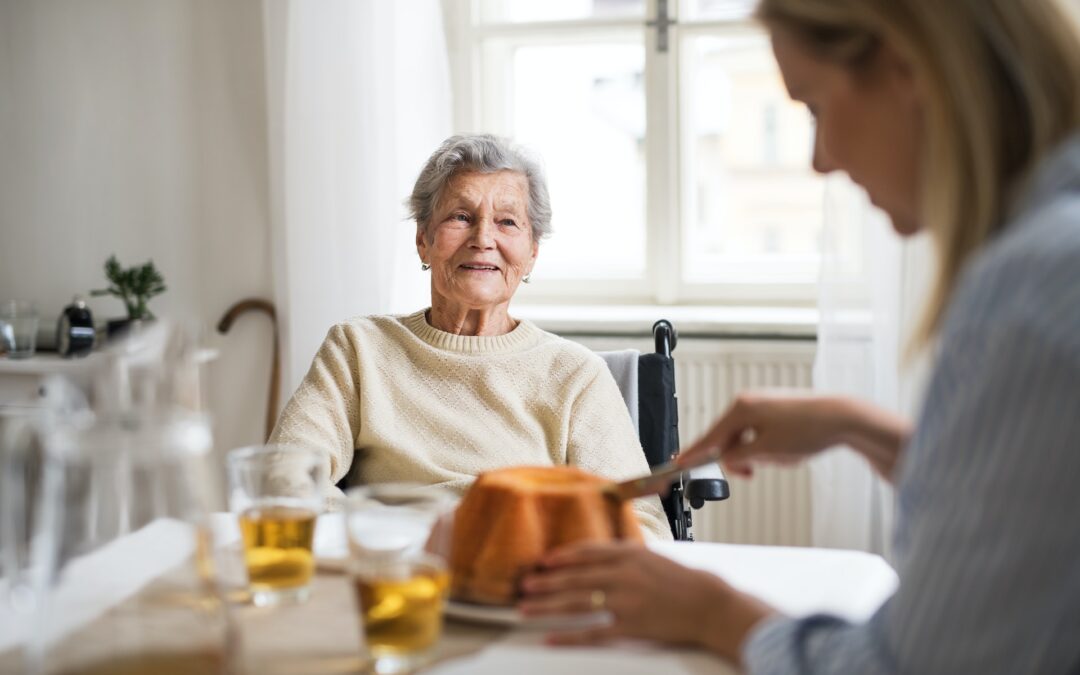As seniors age, their risk of falls and injuries can increase due to factors such as decreased mobility, impaired balance, and changes in vision. In addition to the immediate physical consequences, falls can also have lasting emotional and psychological impacts on seniors, resulting in a fear of falling and a decline in independence. Hence, it is crucial to create a safe and secure home environment that minimizes the risk of falls and injuries for our aging loved ones.
Our blog content strategy delves into the topic of fall prevention and creating a safe home environment for seniors. We will offer a comprehensive guide on various measures families and caregivers can take to minimize the risk of falls and improve their loved ones’ living spaces. The series of blog topics will cover listicles, guides, checklists, expert advice, and FAQs for a diverse range of informative and engaging content. Each topic will be well-researched, informative, and unique, providing readers with valuable resources to ensure their loved ones’ homes are adequately equipped to address their safety needs.
Top 10 Tips for Fall Prevention in Seniors
- Clear Clutter: Eliminate unnecessary obstacles and belongings from high-traffic areas to prevent tripping hazards.
- Secure Rugs: Ensure rugs are nonslip and fasten them firmly to the floor with double-sided tape.
- Install Grab Bars: Place sturdy grab bars in critical areas, such as bathrooms and stairways, to provide additional support.
- Improve Lighting: Increase visibility by ensuring rooms are well-lit, and add motion-sensor nightlights along walkways.
- Manage Cords: Keep electrical cords away from walkways or use cord protectors to minimize tripping hazards.
- Install Handrails: Ensure stairways have handrails on both sides, and consider adding handrails in hallways for extra stability.
- Use Nonslip Mats: Place nonslip mats in areas prone to wetness, such as bathrooms and kitchens.
- Encourage Regular Exercise: Promote activities that improve balance and strength to reduce the risk of falls.
- Manage Medications: Regularly review medications with a healthcare professional, as some may increase the risk of falls.
- Encourage Proper Footwear: Wear well-fitting, nonslip shoes to maintain stability and prevent slips.
Home Modifications for Senior Safety
Creating a safer and more comfortable home environment for aging adults involves making necessary adjustments and modifications. Some key areas to focus on include:
- Entrances: Install ramps or handrails to assist with mobility and provide easier access to the home.
- Bathrooms: Add grab bars in the shower, bathtub, and near the toilet. Additionally, consider installing a walk-in shower or accessible bathtub for easier entry and exit.
- Floors: Replace slippery floors with nonslip flooring options, and secure loose carpets or rugs.
- Kitchen: Adjust countertop and cabinet heights to accommodate seniors who may have difficulty reaching or bending. Consider installing pull-out drawers and shelves for easier access to stored items.
- Living Spaces: Arrange furniture to leave open pathways, and ensure sofas and chairs are at an appropriate height for comfortable sitting and standing.
- Stairways: Add stairlifts or platform lifts to assist seniors with mobility challenges in navigating between floors.
Essential Home Safety Measures for Seniors
Regularly evaluating and implementing safety measures can decrease the risk of falls and accidents. Consider the following items when inspecting your loved one’s home:
- Smoke Alarms: Test and replace batteries in smoke alarms to ensure proper functioning.
- Carbon Monoxide Detectors: Install and maintain carbon monoxide detectors on each floor of the home.
- Emergency Contacts: Compile a list of emergency contacts, including family, friends, and healthcare providers, and post it in a visible location.
- Medication Storage: Keep medications stored in a dry, cool place, and organize them with a pill organizer to ensure correct dosages are administered.
- Fire Prevention: Ensure appliances are unobstructed and in proper working order to prevent fires. Inspect fire extinguishers, and replace them as needed.
The Role of In-Home Care Services in Providing a Safe Home Environment for Seniors
In-home care professionals can play an essential role in creating a safe and secure living environment for seniors. Their services can include:
- Home Safety Assessments: Conducting a thorough evaluation of the home to identify potential hazards and recommend appropriate modifications.
- Customized Care Plans: Developing a personalized care plan that caters to the unique needs and challenges of each senior while ensuring their safety and comfort.
- Assistance with Activities of Daily Living: Providing support with daily tasks, such as personal grooming, mobility, and meal preparation, to minimize the risk of accidents or injuries.
- Medication Management: Monitoring the administration of medications and ensuring proper dosages are taken to prevent adverse side effects.
Conclusion:
Creating a safe and secure home environment for seniors is crucial in minimizing fall risks and promoting independence. By implementing proven fall prevention strategies, making necessary home modifications, and enlisting the help of in-home care services, caregivers can effectively enhance their loved one’s safety and overall quality of life.
Are you concerned about your aging loved one’s safety at home? HoneyBee Home Care’s dedicated caregivers can help create a secure and comfortable living environment for your loved ones with our top-quality in-home care services in Atlanta, GA. Schedule a free in-home consultation today to find out how we can make a difference in your loved one’s life!

